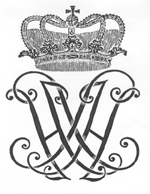The earliest history of Vemmetofte Kloster
Once upon a time. Thus begin all good, old fairy tales – also the fairy tale about Vemmetofte.
In the early Viking Age, a man called Wærmund drew attention to himself among the farmers that settled in Stevns, where they cleared the fields and built homes. The name Vemmetofte means literally Wærmund’s fenced area.
The first simple farms developed into manor farms and in the middle ages, Vemmetofte was strongly fortified by a circular wall, two moats and drawbridges. This was necessary because of the numerous raids by the Wends and the internal strife in Denmark. The only remains of that old castle are two vaulted cellars with four and eight intersecting vaults respectively.
For many years, Vemmetofte was a home for the nobility, owned by members of the most distinguished lineage in Denmark. For over 250 years it was owned by the Brok family from Gammel Estrup, with the court advisor Eske Brok (died 1625) being one of the most well known, pleasant characters. In 1694 the manor estate was bought by Christian V’s queen, Charlotte Amalie, as part of a large buying up of estates in the area. The Queen considered establishing a cloister for noblemen’s daughters at Vemmetofte, but she died in 1714 before the plan could be realized.
Her son Prince Carl inherited Vemmetofte and Højstrup, he immediately began rebuilding the greatly neglected manor farm. Prince Carl can be regarded as the creator of the present Vemmetofte. Not only because he rebuilt the manor farm itself, but also because he erected the surrounding buildings – the so called “hamlet” along the present Vemmetoftevej, the large cattle house in the barnyard, stables, timbered houses for the tenant farmers and other employees, bridges over the moats as well as establishing a garden.
It took nine years to complete all these projects and from then on, in place of the old manor, a distinguished, four-winged baroque manor emerged.
In 1721 the brother Frederik IV promoted his morganatic wife, Anna Sofie Reventlow, to queen. Prince Carl and his sister, Sophie Hedevig showed their disapproval by turning their backs on the court in the capital and take up permanent residence in Vemmetofte. They died in, respectively, 1729 and 1735, but before Sophie Hedevig died, she had drawn up detailed plans for establishing a cloister for noblemen’s daughters. Vemmetofte Cloister for Noblemen’s Daughters was founded on 10th June 1735.









